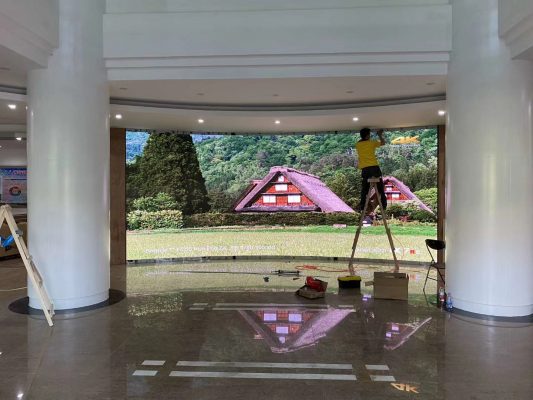Speaking of today’s LED display screen, small-pitch LED display technology for p0.9 p1.2 p1.5 p1.8 is undoubtedly the focus of attention. Unlike traditional LED displays that focus on outdoor applications, the rapid rise of small-pitch LEDs has set its sights on indoor applications where LEDs have never been involved, and is in direct confrontation with strong LCD and DLP splicing.

In the current field of indoor large-screen display, LCD splicing is well-deserved NO.1. With its advantages of lightness, thinness and cost economy, it is widely used in many types of places, dominating the low-end market and actively penetrating the high-end application market. However, LCD splicing has always had an obvious shortcoming-the problem of stitching. Although the rapid maturity of LCD display technology, the stitching is shrinking rapidly (the current minimum is 3.5mm), but it is still the current display technology. , The one with the largest seam. This is in sharp contrast with the small-pitch LED display screen that is completely seamless, and is also an important reason why traditional LED display manufacturers are optimistic about the small-pitch LED display.
1. Small pitch PK DLP splicing: the picture is not delicate enough, but the application is more flexible
In the field of large-screen display, DLP splicing has also been known as “zero patchwork”. It is because of this that it can firmly hold the high-end application market under the strong attack of LCD splicing. Today, it is known as seamless display. The small-pitch LEDs undoubtedly directly “ignored” this killer skill, and even surpassed it, because it achieved a real seam-free seam, instead of shrinking the seam. This is one of the important reasons why small-pitch LEDs are highly concerned by DLP splicing manufacturers at the beginning of their birth.
In addition to no stitching, compared with DLP splicing products, the application of small-pitch LED display products is also more flexible, which can combine touch, naked eye 3D, 4K and other superfluid elements to meet more diverse application needs. However, at present, small-pitch LED products can not compete with DLP splicing walls in the delicate display of the screen, which means that in some application fields that require high picture fineness, DLP splicing is still the first choice.
Second, technology is not a problem, high cost performance is the bottleneck
The development of any display technology is a process of continuous development and improvement, and small-pitch LED display is naturally no exception. Compared with LCD splicing and DLP splicing, it is not difficult to find that as a new technology, small-pitch LEDs have both outstanding advantages and obvious shortcomings. As long as there is firm support, the advantages can be continuously consolidated, and the short board can be gradually repaired. However, in order to obtain the premise of vigorous investment by manufacturers, there must be a large-scale market demand, and at this stage, the first problem to be overcome in large-scale popularization is high cost.
Some insiders said that at present, the price of 1.9mm small-pitch LED products is equivalent to DLP splicing products. Considering the difference in gross profit margin, the cost is even higher than DLP splicing products. For affordable industry users, under the premise of meeting the needs of the application, considering the comprehensive cost performance, small-pitch LEDs may not become the first choice.
However, in the case of limited acceptance in the application market, manufacturers have not reduced their investment in technological upgrades in order to occupy the commanding heights of the industry, which has led to a “relative technology surplus” situation in the small-pitch LED industry. For example, the current minimum pitch in the industry is 0.8mm, and from the perspective of application, the commercial cost of products below P1.0 is too high, and users still cannot afford it.